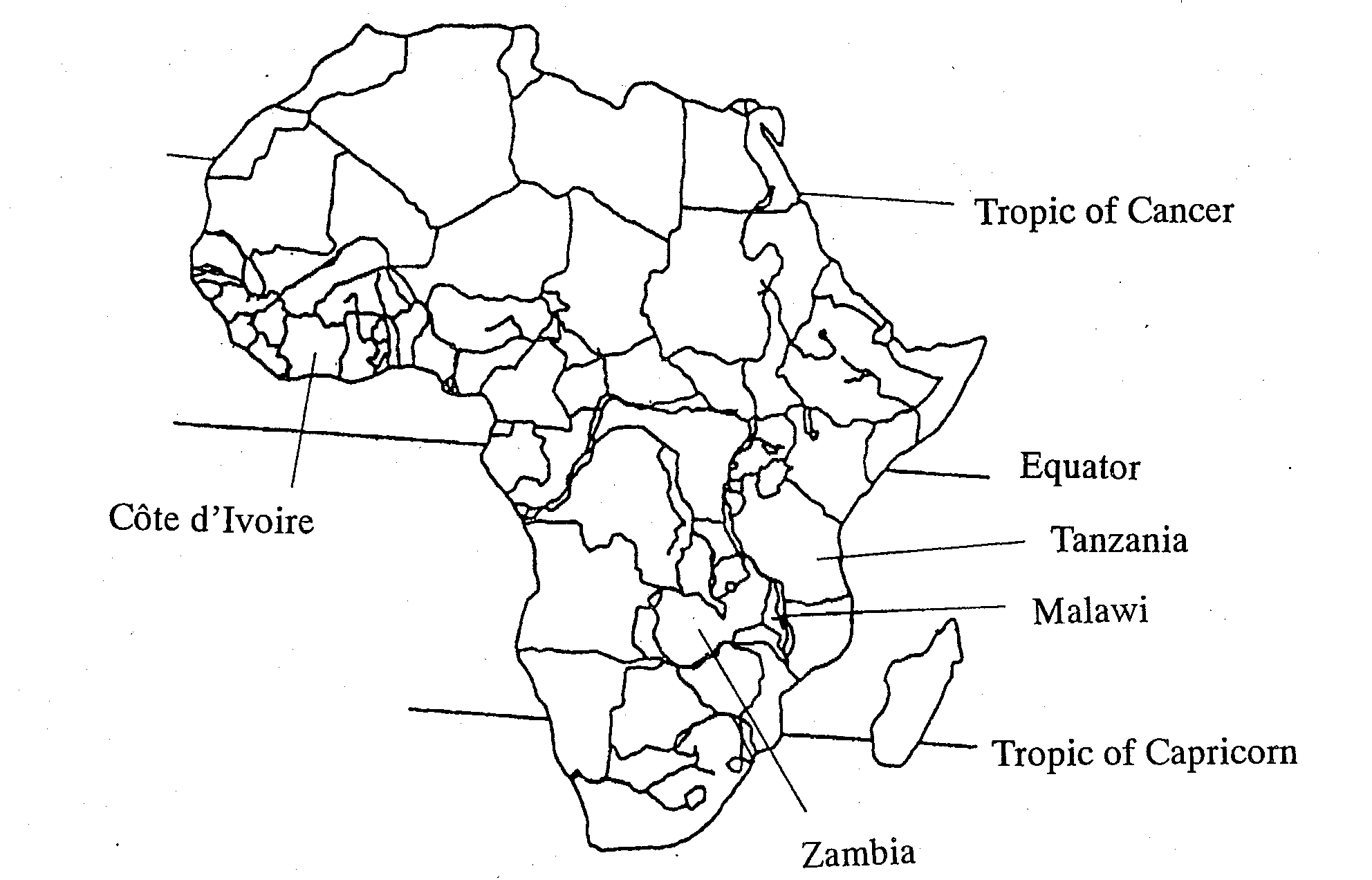1.1 Study Areas and Countries The countries designated for the study and
the study periods are as follows (refer to
Figure 1):
Figure 1 Location Map of the Studied Countries
In selecting the countries for the study,
rice production volumes, trends of demand
for rice, environments for paddy rice cultivation,
presence of inland valley bottoms, government
policies on rice production, and projects
implemented by international research institutes
and JICA were examined based on data and
information available in Japan. The study areas were preliminary selected
from candidate locations based on data and
information available in Japan. Preliminary selected were areas where there
were valley bottoms and the farmers practice
agriculture including rice farming, in accordance
with the study objectives. The study areas were then determined through
on-site surveys and discussions with the
counterpart government agencies of the respective
countries, aid organizations, JICA local
offices, and Japanese experts during the
first fieldwork. 1.2 Course and Activities of the Study The study was carried out over a three-year
period for each country and through collections
and analyses of relevant materials in Japan,
domestic investigative works and overseas
fieldworks. In Japan, a steering committee consisting
of academic experts and authorities on the
relevant fields was formed to examine the
way the study was conducted and the contents
of the reports. The course and activities of the study of
each year are outlined as follows. (1) Year 1: Selection of the study areas
and study on the existing conditions Selecting the countries for the study; selecting
model areas (i.e., study areas) for the project
planning; studying the areas' existing conditions
of socio-economy, agriculture, land use,
water utilizations, farmers' living, farming
practices, agricultural extension system
and training, etc.; identifying the areas'
developmental potentials and constraints;
and formulating developmental strategy. (2) Year 2: Formulation of development plans
(tentative) and implementation of field trials Formulating project implementation plans
(tentative) including preparation of agricultural
infrastructure, crop production (e.g., paddy
rice), agricultural extension and training,
development of appropriate technologies,
etc.; and implementing field trials to collect
data and examine the validity of the tentative
plans. (3) Year 3: Finalization of the development
plan, assessment of the project planning,
and suggestions on project implementation
and management system Continuing the field trials; compiling the
study results; finalizing the project implementation
plan; assessing the project planning; and
offering suggestions on project implementation
and management system. 1.3 Study Method The fieldworks were carried out assuming
the local people's participation, but the
decision on the method of participatory study
was made by the study team. The
present study also has the following
features. (1) Long study period but small number of
experts committed Though a three-year study period was allotted
to each country, fieldworks were held twice
a year, each of which lasted only about two
weeks and to which only five team-members
at the maximum were dispatched. The
number of experts committed was 15 person-months at the maximum each year including
domestic
works, and about 40 person-months for the
entire study period (3 years). As this indicates, the span of the study
period was long relative to the number of
specialists committed. Further,
they visited each village four to five times, and because the their fieldwork
stay was short each time, (1) their contact
with the local people happened frequently
and over a long time span, making it easier
to develop trust with them; (2) it was possible
to adjust the course of planning through
field trials and discussions; and (3) the
extent of the participation by the local
people and the counterpart organizations
of the respective countries came to determine
the study's success greatly. (2) Implementation of field trials Field trials with the subjects extracted from project ideas were implemented to assess the validity (or feasibility) of the tentative project plans to be formulated at the beginning of the second year. The contents of the field trials were determined by the study team through discussions with the counterpart organizations of the respective countries and the local people. They included fertilizer application experiments for crops, construction of small-scale irrigation facilities, groundwater development (including geo-physical surveys), farmers' organizing and training, and prevention measures against damage by wild animals. The scale of the field trials was about US$15,000 (2 million yen) at the maximum.
|
